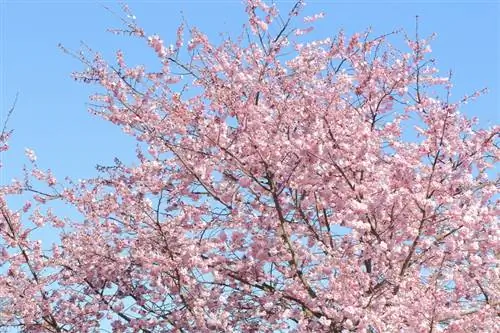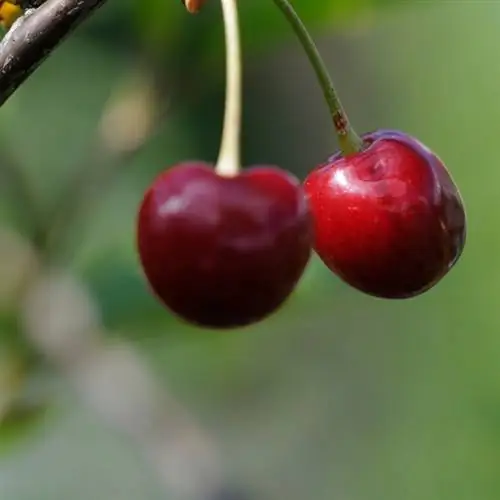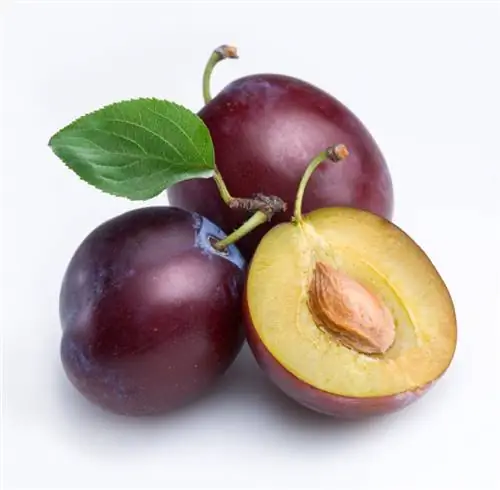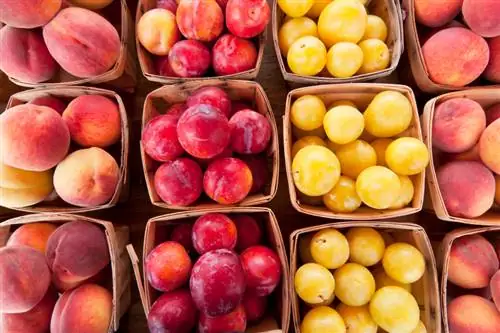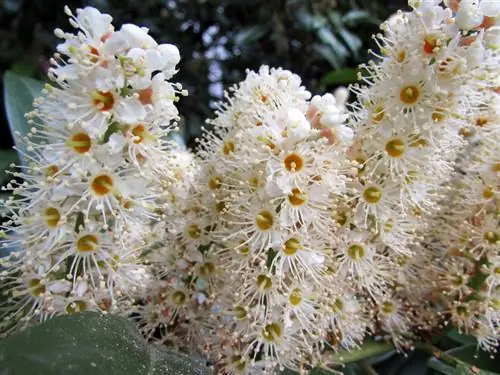- Author admin [email protected].
- Public 2023-12-16 16:46.
- Last modified 2025-06-01 06:02.
Contrary to popular belief, the cherry plum is not a cross between cherry and plum. But what makes them special? Here is an overview of their most important properties.
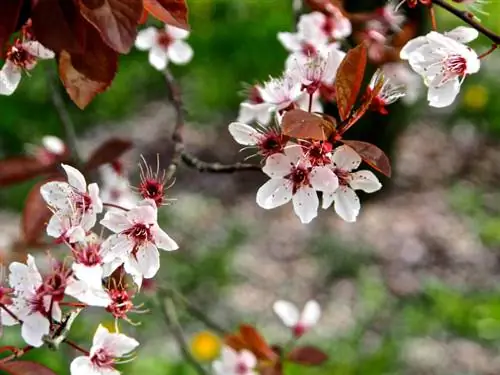
What are the characteristics of a cherry plum?
The cherry plum is a fast-growing shrub or multi-stemmed tree from the rose family, comes from Small and Central Asia and reaches a height of up to 8 m. It has dark green, deciduous leaves, white or pink flowers and edible, yellow-brown fruits with juicy flesh.
The cherry plum - short and sweet
- Plant family and genus: Rosaceae, Prunus
- Origin: Minor and Central Asia
- Location: sunny to partially shaded
- Soil: calcareous, nutrient-rich
- Growth: sparse, densely branched, overhanging
- Leaves: deciduous, alternate, stalked, dark green, ovate, serrate
- Flowering: late March to early April, white, hermaphrodite
- Fruits: drupes, ripe from July
- Care: Thinning
- Diseases: rare, Monilia fruit rot, fool's disease
- Use: useful and ornamental plant
The external appearance
The cherry plum grows between 30 and 50 cm per year. This means that it is considered a fast-growing native tree. It usually grows into a large bush. More rarely, their growth describes a multi-stemmed tree. Overall it reaches a height of up to 8 m.
While their root system likes to propagate using runners, the leaves are summer green. They grow between 3 and 7 cm long and between 2 and 3.5 cm wide. They cling to reddish stems, are glabrous and dark green in color. In autumn they turn yellow to orange-red before they are shed.
The white-pink flowers appear before or with the foliage. They form on the short shoots of last year's long shoots and are fragrant. The fruits they produce are ripe from July onwards. Depending on the variety, they are colored yellow to brown-red, spherical and edible. The firm and juicy pulp tastes slightly sour to sweet.
The correct handling of the cherry plum
The cherry plum is hardy down to -30 °C. It requires a sunny to partially shaded location in a warm and protected location. The soil near their roots should be nutrient-rich, calcareous and moist. When it comes to care, it is enough to thin them out regularly and water them extensively in the beginning. Diseases occur in rare cases.
Tips & Tricks
Attention: Cherry plums that appear particularly ripe, which yield easily when pressed with the finger and have a bright color, are often infested with hungry worms. Keep an eye out if you're less keen on a meat side dish when eating the fruit.


